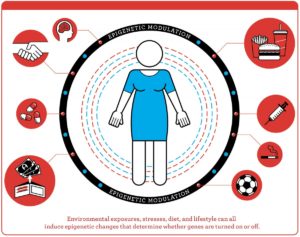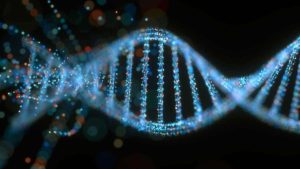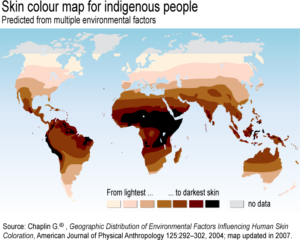- Upon finishing this book, I am left with more questions than when I first cracked it open. While I have learned so much, evolutionary medicine is a relatively new field and still has much to explore. I am curious how our knowledge from evolutionary medicine can be implemented both by doctors and in the public health sector. How can this knowledge help us better diagnose and treat patients as well as just take care of ourselves on a day-to-day basis.
- One question that I have and would love to ask Dr. Moalem is his view on genetic engineering of organisms and how he thinks this would affect the evolutionary process? In accordance with this, how has the presence of sperm banks altered the concept of natural selection in the modern world? Just some things to keep you thinking! Let me know your thoughts in the comments below.
Learning Moment
I had basically no knowledge of evolutionary medicine before reading this book, so it’s safe to say I learned way more than I would be able to explain on this page. I have always wondered why heritable diseases are so prevalent in the world if natural selection is working to eradicate them. Before opening the pages to this book, I simply had never pondered what could be keeping these diseases around. It seems almost obvious that they would have had some benefit in an earlier time which led to their proliferation within the gene pool. I worked with diabetic children for a whole summer as a counselor at Camp Sweeney and thought I knew everything under the sun about diabetes…turns out I was wrong. I had never heard the hypothesis that diabetes may be beneficial to surviving in intensely cold climates, such as an Ice Age. I had never even heard of hemochromatosis before reading this book and had no clue the role that iron plays in the life of pathogens. I found I learned something new from almost all of the studies that were cited. I am not exaggerating when I say that reading this book has reinvigorated my love for learning for the sake of learning alone.
Target Audience
 While I urge everyone to read this book because evolutionary medicine is such a relevant and informative topic, I think individuals with at least a little background knowledge in biology and genetics would enjoy this read the most. Dr. Moalem does a great job of not using a lot of jargon and fully explaining concepts at a basic level. Someone who is not familiar with basic biological terms and ideas still may get a little lost. To all you business majors out there, do not let this deter you from reading this book! While it may be less of an easy read for you, the knowledge you will gain is just as pertinent. Most people think that only current and future health care professionals need to worry about topics like evolutionary medicine, but I disagree. We all are aware of our own bodies and level of health so should also be informed on what we have been through to get where we are and how we are still evolving. If nothing else, being made aware of our intricate relationship with our environment and the complexities of our bodies should be a reminder to everyone to appreciate the gift of life.
While I urge everyone to read this book because evolutionary medicine is such a relevant and informative topic, I think individuals with at least a little background knowledge in biology and genetics would enjoy this read the most. Dr. Moalem does a great job of not using a lot of jargon and fully explaining concepts at a basic level. Someone who is not familiar with basic biological terms and ideas still may get a little lost. To all you business majors out there, do not let this deter you from reading this book! While it may be less of an easy read for you, the knowledge you will gain is just as pertinent. Most people think that only current and future health care professionals need to worry about topics like evolutionary medicine, but I disagree. We all are aware of our own bodies and level of health so should also be informed on what we have been through to get where we are and how we are still evolving. If nothing else, being made aware of our intricate relationship with our environment and the complexities of our bodies should be a reminder to everyone to appreciate the gift of life.
Critical Assessment
I thoroughly enjoyed this book and appreciate the novel perspective used to approach real medical problems. I think too often people are focused on the “what” of medicine and understanding how everything occurs and don’t take time to properly consider the “why.” Dr. Sharon Moalem did an excellent job at writing in a way that was enjoyable and exciting to read while still being educational and informative, which is no easy feat. Based on my opinion, I think Dr. Moalem supported his argument and opinions farely well and incorporated multiple different studies and hypotheses to emphasize his points.
Something that I was not super happy with was that he failed to mention any studies or viewpoints that conflicted with his own. For example, in the last chapter, when discussing the different hypotheses for the evolution of bipedalism, Dr. Moalem only brought up the savannah hypothesis and aquatic ape hypothesis, when I know there are multiple other hypotheses that have been put forth. In addition, the way he wrote it made it seem as if the most likely and widely accepted hypothesis is that of the aquatic ape, which is not necessarily accurate. Also, when presenting correlations between events, such as diabetes and the onset of cold weather, to the general public reading this book it may have come off as if correlation implied causation. Any science major can tell you is not the case. Overall, an interesting and educational read. Highly recommend!

Chapter 8: That’s Life
 There are only two certainties in this world: birth and death. Every single living person was born from their mother and will one day die. This chapter explores the evolution of both of these natural processes. Ironically, Dr. Moalem begins this chapter with the topic of aging. Through studying the rare disease, progeria, which causes extreme accelerated aging that results in death by the age of 30, scientists discovered that the cells of people with progeria look almost identical to normal elderly people. This is significant because it indicates that the aging process is programmed into cells, not just a result of the wear and tear of living. Through further exploration, it was discovered that cells are preprogrammed to only be able to divide a certain number of times. This concept has led scientists to hypothesize why the body would, in a way, self sabotage. So far there are two generally accepted hypotheses for why the body ages and ultimately is programmed to die. First is the concept that aging and death of humans makes room for new humans to be born, accelerating the rate of evolution. Another hypothesis is that death is the elimination of individuals who have likely acquired parasites throughout their lives in order to prevent infecting younger generations.
There are only two certainties in this world: birth and death. Every single living person was born from their mother and will one day die. This chapter explores the evolution of both of these natural processes. Ironically, Dr. Moalem begins this chapter with the topic of aging. Through studying the rare disease, progeria, which causes extreme accelerated aging that results in death by the age of 30, scientists discovered that the cells of people with progeria look almost identical to normal elderly people. This is significant because it indicates that the aging process is programmed into cells, not just a result of the wear and tear of living. Through further exploration, it was discovered that cells are preprogrammed to only be able to divide a certain number of times. This concept has led scientists to hypothesize why the body would, in a way, self sabotage. So far there are two generally accepted hypotheses for why the body ages and ultimately is programmed to die. First is the concept that aging and death of humans makes room for new humans to be born, accelerating the rate of evolution. Another hypothesis is that death is the elimination of individuals who have likely acquired parasites throughout their lives in order to prevent infecting younger generations.
 Now that we have the demoralizing “you will get old and die” section out of the way, let’s move on to a brighter topic in evolutionary science: birth. Dr. Moalem discusses how childbirth in humans generally lasts longer and is riskier than that of other primates. This has been previously attributed to the obstetrical dilemma, or the hypothesis that selection for both bipedalism, which is accompanied by a narrowing of the pelvis, and big brains in humans resulted in a more difficult birthing process. This leads to the question of what drove evolution towards these traits that do not seem to work together? One hypothesis for bipedalism is the savanna hypothesis which states that our ancestors moved from forests to grasslands, probably due to environmental change, where there was a harder way of life. Males had to hunt for game with tools and needed to be bipedal to travel long distances quickly and scan for prey. One major problem with this hypothesis is that it only focuses on males and does not explain at all why women and children also would have evolved. Another hypothesis is the aquatic ape theory which says that our ancestors spent time both on land and in and around water, leading to the evolution of traits that benefit aquatic environments such as less hair and more fat. In this hypothesis, bipedalism evolved in order to wade deeper while still being able to breath. Dr. Moalem shows a strong preference for this hypothesis and then proceeds to make a case for water birth over contemporary birthing measures. Dr. Moalem sites studies saying that women who give birth in water experienced an easier and accelerated delivery process, probably because babies are preprogrammed for being born into an aquatic environment.
Now that we have the demoralizing “you will get old and die” section out of the way, let’s move on to a brighter topic in evolutionary science: birth. Dr. Moalem discusses how childbirth in humans generally lasts longer and is riskier than that of other primates. This has been previously attributed to the obstetrical dilemma, or the hypothesis that selection for both bipedalism, which is accompanied by a narrowing of the pelvis, and big brains in humans resulted in a more difficult birthing process. This leads to the question of what drove evolution towards these traits that do not seem to work together? One hypothesis for bipedalism is the savanna hypothesis which states that our ancestors moved from forests to grasslands, probably due to environmental change, where there was a harder way of life. Males had to hunt for game with tools and needed to be bipedal to travel long distances quickly and scan for prey. One major problem with this hypothesis is that it only focuses on males and does not explain at all why women and children also would have evolved. Another hypothesis is the aquatic ape theory which says that our ancestors spent time both on land and in and around water, leading to the evolution of traits that benefit aquatic environments such as less hair and more fat. In this hypothesis, bipedalism evolved in order to wade deeper while still being able to breath. Dr. Moalem shows a strong preference for this hypothesis and then proceeds to make a case for water birth over contemporary birthing measures. Dr. Moalem sites studies saying that women who give birth in water experienced an easier and accelerated delivery process, probably because babies are preprogrammed for being born into an aquatic environment.

 One of the newest disciplines in both the field of genetics and science in general is epigenetics. This is a modern discipline that studies how environmental exposure can influence the expression or suppression of specific genes without altering the DNA of the individual. Essentially, through the understanding of epigenetics, two people with the exact same DNA, such as identical twins, can manifest their genes differently based on differing experiences and environment. DNA Methylation, or the binding of a methyl group to a specific gene, acts as a switch, effectively suppressing the target gene without removing it from the genome. Another form of epigenetics is the effective removal of methyl groups from genes in order to express them. Both of these scenarios can be beneficial depending on what gene is being targeted. These acquired traits are then able to be inherited by offspring. Most of the initial studies that led to the concept of epigenetics focused on maternal effect, or the methylation within a fetus being determined by the decisions and environment of it’s mother. Maternal effect has more recently been linked to the ever increasing rate of childhood obesity. The thrifty phenotype hypothesis predicts that when a pregnant mother eats a diet rich in fats but lacking in nutritional value (such as a diet of primarily fast food), their fetus thinks it is being born into an environment lacking nutrients. Consequently, the fetus undergoes methylation that results in a “thrifty” metabolism which is better equipped at storing energy. If this were to occur during a time of actual famine, the fetus would be better able to survive. In the modern world, where food is readily available, when a baby is born with a “thrifty” metabolism it results in obesity. This is just one example of epigenetics at work. Make no mistake, gene suppression and expressions via methylation is occurring frequently in individuals throughout their life times. This is still such a new concept and area of study. Much more research must be done on the matter in order to truly understand how our environment and items we ingest are affecting us. Dr. Moalem suggests that this will be a promising area for treatment options in the future of medicine.
One of the newest disciplines in both the field of genetics and science in general is epigenetics. This is a modern discipline that studies how environmental exposure can influence the expression or suppression of specific genes without altering the DNA of the individual. Essentially, through the understanding of epigenetics, two people with the exact same DNA, such as identical twins, can manifest their genes differently based on differing experiences and environment. DNA Methylation, or the binding of a methyl group to a specific gene, acts as a switch, effectively suppressing the target gene without removing it from the genome. Another form of epigenetics is the effective removal of methyl groups from genes in order to express them. Both of these scenarios can be beneficial depending on what gene is being targeted. These acquired traits are then able to be inherited by offspring. Most of the initial studies that led to the concept of epigenetics focused on maternal effect, or the methylation within a fetus being determined by the decisions and environment of it’s mother. Maternal effect has more recently been linked to the ever increasing rate of childhood obesity. The thrifty phenotype hypothesis predicts that when a pregnant mother eats a diet rich in fats but lacking in nutritional value (such as a diet of primarily fast food), their fetus thinks it is being born into an environment lacking nutrients. Consequently, the fetus undergoes methylation that results in a “thrifty” metabolism which is better equipped at storing energy. If this were to occur during a time of actual famine, the fetus would be better able to survive. In the modern world, where food is readily available, when a baby is born with a “thrifty” metabolism it results in obesity. This is just one example of epigenetics at work. Make no mistake, gene suppression and expressions via methylation is occurring frequently in individuals throughout their life times. This is still such a new concept and area of study. Much more research must be done on the matter in order to truly understand how our environment and items we ingest are affecting us. Dr. Moalem suggests that this will be a promising area for treatment options in the future of medicine. Historically, a person’s DNA has been thought of as a rigid template for growth, with a single gene coding for a specific trait. In this model, the only way that evolution could occur is through natural selection acting on random mutations to the genome. It has since been proved that the process is a bit more complicated than this. It seems as if only 3% of a person’s DNA actually codes for specific proteins and the remaining 97% is noncoding DNA, meaning we are not quite positive of its purpose. In addition, the one gene per trait theory has been replaced by the thought that genes are integrative and multiple genes can contribute to a singular trait and vice versa. It has also been determined that random mutation would not be able to explain certain traits that have evolved because the chance that the correct mutation occurred in the exact correct location is almost unfathomable. Instead, much research has been conducted that has discovered the existence of “jumping genes.” Jumping genes, also called transposons, are activated during times of internal or external stress, either copying and pasting or cutting and pasting themselves into specific segments of coding DNA. It is currently understood that by doing this, jumping genes are increasing the rate of mutation in an organized fashion and increasing the likelihood that they will, in a way, “speed up” the evolutionary process in order to better survive in their current situation. About 50% of noncoding DNA is now considered to consist of numerous jumping genes. Even more recently, researchers have come across new evidence that points to viruses as being the main cause of this noncoding portion of our DNA. In the chapter, Dr. Moalem indicates that jumping genes, and therefore noncoding DNA, have a composition that looks very similar to that of viruses. Since the beginning of history, viruses have been infecting host cells and taking over the cells genetic machinery in order to replicate. Some viruses, known as retroviruses, are even able to write themselves into their host’s DNA, literally changing a person’s genetic makeup. The current theory is that over time, some virus DNA that has been inserted into the human genome has been beneficial, such as jumping genes, and has increased the rate and ability of human evolution.
Historically, a person’s DNA has been thought of as a rigid template for growth, with a single gene coding for a specific trait. In this model, the only way that evolution could occur is through natural selection acting on random mutations to the genome. It has since been proved that the process is a bit more complicated than this. It seems as if only 3% of a person’s DNA actually codes for specific proteins and the remaining 97% is noncoding DNA, meaning we are not quite positive of its purpose. In addition, the one gene per trait theory has been replaced by the thought that genes are integrative and multiple genes can contribute to a singular trait and vice versa. It has also been determined that random mutation would not be able to explain certain traits that have evolved because the chance that the correct mutation occurred in the exact correct location is almost unfathomable. Instead, much research has been conducted that has discovered the existence of “jumping genes.” Jumping genes, also called transposons, are activated during times of internal or external stress, either copying and pasting or cutting and pasting themselves into specific segments of coding DNA. It is currently understood that by doing this, jumping genes are increasing the rate of mutation in an organized fashion and increasing the likelihood that they will, in a way, “speed up” the evolutionary process in order to better survive in their current situation. About 50% of noncoding DNA is now considered to consist of numerous jumping genes. Even more recently, researchers have come across new evidence that points to viruses as being the main cause of this noncoding portion of our DNA. In the chapter, Dr. Moalem indicates that jumping genes, and therefore noncoding DNA, have a composition that looks very similar to that of viruses. Since the beginning of history, viruses have been infecting host cells and taking over the cells genetic machinery in order to replicate. Some viruses, known as retroviruses, are even able to write themselves into their host’s DNA, literally changing a person’s genetic makeup. The current theory is that over time, some virus DNA that has been inserted into the human genome has been beneficial, such as jumping genes, and has increased the rate and ability of human evolution. Every organism on earth has the same end goals: to survive and reproduce. In the case of parasites and pathogens, this is no different. Generally, the term “parasite” comes with a negative connotation and causes people to immediately think of severe illnesses, such as malaria. In reality, parasites and pathogens do not always have such severe effects on their hosts. They are simply manipulating their host in the method that will result in the greatest likelihood of their survival and proliferation. While malaria is a terrible diseases, the reason it basically incapacitates its host is to make it easy for other mosquitoes to bite the infected host and pass the parasite on to other unsuspecting individuals. This extreme level of virulence is not necessarily the norm. Some microbes, such as the common cold, actually want their host to be well enough to go about with their daily activities because it provides more opportunities for the virus to be passed to other individuals. This chapter introduces the theory that if we use our understanding that pathogens evolve in order to best increase their probability of transmission, and we work to shut down all modes of transmission and transportation other than direct human to human interaction, we could actually push the evolution of pathogens to less virulent strains. While this may seem like a long shot and certainly will not work with all harmful microbes, it is worth a try. It is about time we manipulated pathogens instead of them manipulating us.
Every organism on earth has the same end goals: to survive and reproduce. In the case of parasites and pathogens, this is no different. Generally, the term “parasite” comes with a negative connotation and causes people to immediately think of severe illnesses, such as malaria. In reality, parasites and pathogens do not always have such severe effects on their hosts. They are simply manipulating their host in the method that will result in the greatest likelihood of their survival and proliferation. While malaria is a terrible diseases, the reason it basically incapacitates its host is to make it easy for other mosquitoes to bite the infected host and pass the parasite on to other unsuspecting individuals. This extreme level of virulence is not necessarily the norm. Some microbes, such as the common cold, actually want their host to be well enough to go about with their daily activities because it provides more opportunities for the virus to be passed to other individuals. This chapter introduces the theory that if we use our understanding that pathogens evolve in order to best increase their probability of transmission, and we work to shut down all modes of transmission and transportation other than direct human to human interaction, we could actually push the evolution of pathogens to less virulent strains. While this may seem like a long shot and certainly will not work with all harmful microbes, it is worth a try. It is about time we manipulated pathogens instead of them manipulating us. There is much folklore surrounding the infamous fava beans. The most famous is that Pythagora, the ancient scholar, warned all of his students to avoid them at all costs. The million dollar question that people have been trying to figure out ever since is why? Did Pythagoras actually say this, and if so, was it a metaphor or to be taken literally? In this chapter Dr. Moalem argues that Pythagoras’s warning was probably meant to be taken literally. Favism is the most common enzyme deficiency in the world today and is also a heritable disease. If people who have favism, and thus lack the G6PD enzyme, eat fava beans it can result in death due to sudden anemia. The G6PD enzyme is thought to be responsible for maintaining the integrity of the cell, specifically in red blood cells. Free radicals on the other hand have unpaired electrons that are looking to pair with already pair molecules, thus threatening the stability of the cell. Therefore, one major role of the G6PD enzyme is removing free radicals. The reason people with favism have an adverse reaction to fava beans is because the beans contain compounds that produce free radicals which leads to the lysing of red blood cells when the G6PD enzyme is not present. One notable observation is that the places where favism is most common coincidentally overlaps with the places where fava beans are harvested and eaten. So, what is the evolutionary advantage of this seemingly detrimental disease? Dr. Moalem believes that lacking the G6PD enzyme results in red blood cells that are less hospitable to malaria. This would mean that favism is selected for because it provides resistance to malaria, which explains why it is predominantly found in tropical climates where mosquitoes are common. You may be wondering why these same populations would then produce and eat the majority of the world’s fava beans? Dr Moalem has an explanation for this as well. He says that eating fava beans, which increases free radicals, also makes regular red blood cells less hospitable to malaria, acting as a natural preventative care measure.
There is much folklore surrounding the infamous fava beans. The most famous is that Pythagora, the ancient scholar, warned all of his students to avoid them at all costs. The million dollar question that people have been trying to figure out ever since is why? Did Pythagoras actually say this, and if so, was it a metaphor or to be taken literally? In this chapter Dr. Moalem argues that Pythagoras’s warning was probably meant to be taken literally. Favism is the most common enzyme deficiency in the world today and is also a heritable disease. If people who have favism, and thus lack the G6PD enzyme, eat fava beans it can result in death due to sudden anemia. The G6PD enzyme is thought to be responsible for maintaining the integrity of the cell, specifically in red blood cells. Free radicals on the other hand have unpaired electrons that are looking to pair with already pair molecules, thus threatening the stability of the cell. Therefore, one major role of the G6PD enzyme is removing free radicals. The reason people with favism have an adverse reaction to fava beans is because the beans contain compounds that produce free radicals which leads to the lysing of red blood cells when the G6PD enzyme is not present. One notable observation is that the places where favism is most common coincidentally overlaps with the places where fava beans are harvested and eaten. So, what is the evolutionary advantage of this seemingly detrimental disease? Dr. Moalem believes that lacking the G6PD enzyme results in red blood cells that are less hospitable to malaria. This would mean that favism is selected for because it provides resistance to malaria, which explains why it is predominantly found in tropical climates where mosquitoes are common. You may be wondering why these same populations would then produce and eat the majority of the world’s fava beans? Dr Moalem has an explanation for this as well. He says that eating fava beans, which increases free radicals, also makes regular red blood cells less hospitable to malaria, acting as a natural preventative care measure. While cholesterol is often regarded in a negative connotation, it actually is necessary for survival. Cholesterol is responsible for making and maintaining the cell membrane, it is an essential component of some hormone molecules, and is necessary for the production of vitamin D. In order for the body to produce vitamin D, UVB light must hit the skin and stimulate the conversion of cholesterol into vitamin D. Interestingly, UVB light also destroys folate in the skin, which is necessary for DNA replication. It is well known that humans around the globe have various skin colors, which has widely been accepted as a result of differing levels of melanin production. Individuals with darker skin evolved in climates that received a lot of strong sunlight which prompted the increased production of melanin in order to prevent the absorption of too much UVB light and protect against excessive folate degradation. Subsequently, the
While cholesterol is often regarded in a negative connotation, it actually is necessary for survival. Cholesterol is responsible for making and maintaining the cell membrane, it is an essential component of some hormone molecules, and is necessary for the production of vitamin D. In order for the body to produce vitamin D, UVB light must hit the skin and stimulate the conversion of cholesterol into vitamin D. Interestingly, UVB light also destroys folate in the skin, which is necessary for DNA replication. It is well known that humans around the globe have various skin colors, which has widely been accepted as a result of differing levels of melanin production. Individuals with darker skin evolved in climates that received a lot of strong sunlight which prompted the increased production of melanin in order to prevent the absorption of too much UVB light and protect against excessive folate degradation. Subsequently, the